Text
Alongside Perth-born Ledger, director Brian Helgeland cast Mark Addy, Paul Bettany and Rufus Sewell, all of whom performed competently; but most electrifying on the screen were the uncredited horses – the mighty Kladrubers.
“Czech carriage horses,” explains Helgeland. “There was a breeder in the country who kept the line going after the Russians had stopped. Their lineage goes back over 700 years, during which they pulled royal carriages and served as the medieval equivalent of tanks. We animated a little steam coming out of the nostrils, so they’d look more like locomotives!”
Realising the dangers of jousting and working with large animals, the director at first had tried to shoot a lot of the mounted action in front of a blue screen. “We had actors riding sawhorses on a platform, but it looked fake,” he recalls. “The stunt director said, ‘let’s really joust’ and we hired professionals.”
He also had the assistance of French trainer Mario Luraschi (read more about him in ‘The Little Horse That Could’, Equestrian Life, April 2021). Many of the film’s horses were from the Czech National Stud, including Ledger’s bay roan. But it was Luraschi who provided all of the stunt horses including the black Andalusian/Thoroughbred, El Noche, who rears before galloping into the joust. And Emilio, a chestnut Spanish/Anglo Arab, who performs a very complicated scene. When the knight he is carrying (a stuntman) is felled by a lance, the horse flips up and falls backwards though the rail which separates the jousters. It required extensive planning and horsemanship and, in 2002, the team went on to receive an award for this perfectly executed stunt.
Read more.
19 notes
·
View notes
Text
youtube
A look at the creation of the CG version of Black Wind in Mulan (2020).
18 notes
·
View notes
Text
As we all know, many horse films produced by Hollywood are poorly done and riddled with inaccuracies in terms of how horses should be properly ridden and handled. Evidently Redford was determined to not let this happen with The Horse Whisperer because he recruited two of the best trainers in the horse business, Buck Brannaman and Rex Peterson, to help with the film. Buck, who lives near Sheridan, Wyo., ranks as one of the very best equine clinicians today and could certainly be called a horse whisperer. In fact, author Nicholas Evans spent a great deal of time with Buck while researching horse behavior and horse handling for the book. Evans, who lives in England, also visited with Ray Hunt and Tom Dorrance.
More on the Horses
In THW, four horses are used for the role of Pilgrim, Grace’s horse who becomes so dangerous after the accident. Rex Peterson owns the three horses – High Tower, Cash, and Maverick- who play the traumatized Pilgrim who rears, strikes, and bites at anyone approaching him. One of Buck Brannaman’s horses, a registered Thoroughbred gelding named Kentucky Pet, is the “gentle” Pilgrim.
Rex Peterson provided three of what he refers to as “fighting” horses. On cue, such a horse rears, charges, paws, or bites … whatever the scene calls for.
Rex’s No. 1 fighting horse is the 14-year-old gelding High Tower. A race-bred Quarter Horse, High Tower is not registered because he was a catch colt, the result of a teaser stallion getting loose one night and breeding an expensive mare. Rex bought High Tower years ago and has used him as a ranch and movie horse and for dressage, open jumping, driving, team penning, and roping wild bulls. “It’s easier to tell what we haven’t done with him,” Rex grinned.
For this movie, High Tower’s greatest attribute is the ability to instantly “fight” on cue and instantly shut off on cue. He can be likened to a police K-9 dog who charges after a bad guy on cue but stops dead in his tracks when so ordered. Rex said teaching a horse to fight is easy. “It’s teaching him to stop when you tell him that’s the hard part.”
High Tower excels at this, and Rex said, “I’m not afraid to let him get right in your face because he’ll quit when I tell him.”
With that said, Rex gave me a personal demonstration. I stood next to him, and High Tower was about 10 feet away when Rex cued him to charge. Even though I trusted Rex, I instinctively jumped back when this 1,200-pound horse suddenly thundered toward us. But right on cue, High Tower stopped inches away from where I had been standing.
Because High Tower is so honest and responds instantly to cues, he was the horse Rex always used when Redford was between them. In other words, when Pilgrim was charging Redford, Rex stood behind Redford, off camera, cueing the horse. Rex trusted High Tower to stop before freight-training the star.
What’s really amazing is how quickly High Tower turns off his “anger.” After charging, attacking, or doing a biting scene, he stands calmly and quietly as if he’d been munching hay. Rex’s No.2 and 3 horses are not that way.
Says Rex: “It takes about 30 minutes for the No.2 horse (Cash) to turn it off and forget it. The No. 3 horse (Maverick) … well, a fight scene is no game with him. We have to be ultra-careful with him.” Both Cash and Maverick have racing Quarter Horse bloodlines.
Mike Boyle, Rex’s brother-in-law, was the head wrangler for the movie. He told me that shooting in the stall, in Connecticut where Pilgrim was confined after the accident, was extremely difficult. First of all, the horse playing Pilgrim bad to be very disinterested because he didn’t like people, he had no human friends, and he was in bad condition. He’s all to himself and doesn’t want anything to do with people or other horses. He stands off in a corner until feed is thrown into the stall. Then he has to come up like a wild horse.”
Shooting a fight scene in that stall was complicated because the stall was so tight and because the horse had to express just the right attitude, then charge. Added Mike, ” It took days to get it, then we had to reshoot due to some lighting problems. So we brought the ‘detention stall’ to Montana to set up and do it all over again. We finally got a great fighting scene.”
Another equine star not mentioned yet is Buck Brannaman ‘s Rambo, who plays the role of Rimrock, Tom Booker’s No. 1 horse. Rambo, registered with the AQHA as Rambo Roman, is by True Roman, a descendant of Fair Truckle (TB). Buck has owned the 10-year-old Rambo for 5 years. Buck first saw the bay when he was brought to one of Buck’s clinics as a 3-year-old for starting under saddle.
Buck’s wife, Mary, describes Rambo as being extremely sensitive to the rider, operating off featherlight cues. But Mary added that Rambo seems to adjust to other riders less skilled than Buck. That includes most of the rest of us.
30 notes
·
View notes
Text
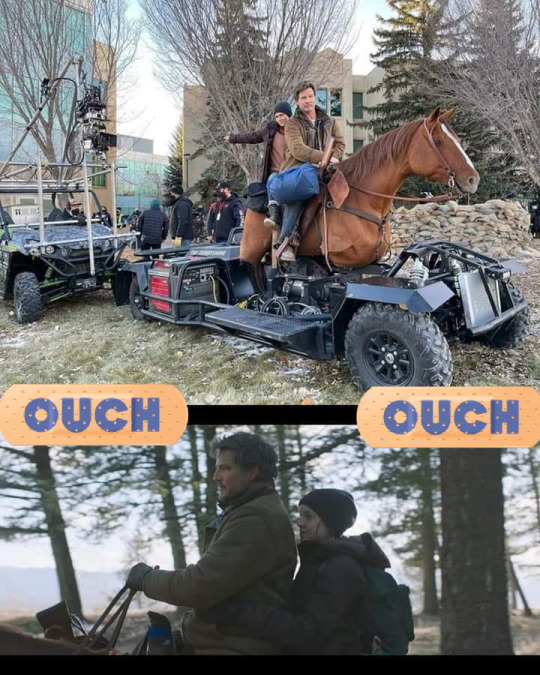
From behind the scenes of the show THE LAST OF US. Once again, a mechanical horse was used :)
21 notes
·
View notes
Text
Tumblr’s favorite animated movie, Round 6!
Choose your favorite!

Vote in the other polls!
470 notes
·
View notes
Text
Tumblr’s favorite animated movie, Round 5!
Choose your favorite!

Vote in the other polls!
933 notes
·
View notes
Text
Although a veterinarian assessed the recent horse death on the set of The Rings of Power as "unlikely to be associated with the horse's participation in the film," more can be done to protect horses and the industry.
In Australia, no specific standard exists for the use of animals in filmed media, and each state and territory has differing risk management guidelines.
An opportunity now exists for the industry to set a new standard for horse care and training.
An easily executable first step for the industry could be to insist a scientifically trained and credentialed equine behavior expert be involved in the recruitment and supervision of horse actors and their trainers at all stages of production.
This would ensure horse actors are appropriately trained to be on set and that horses are trained using the most up-to-date ethical methods.
Horse behavior experts could also help in scene design to minimize horses' exposure to stressful situations and identify tasks that are incompatible with good horse welfare.
If these suggestions were to be adopted, the film and television industry would be setting the benchmark for horse welfare—and pressure other horse industries to follow suit.
Read more.
22 notes
·
View notes
Photo
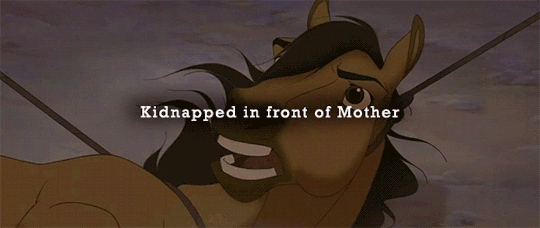
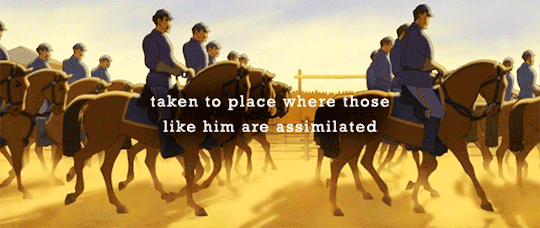
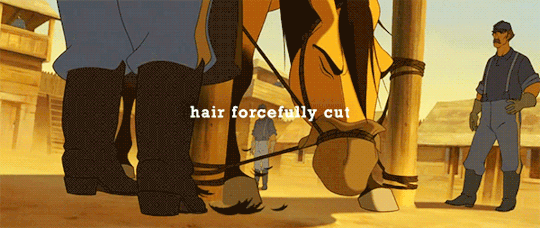

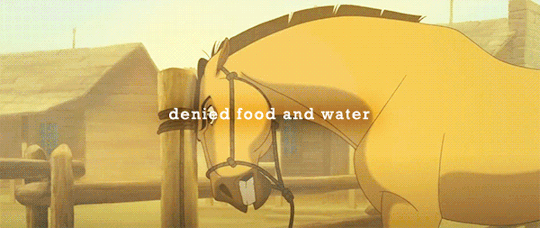
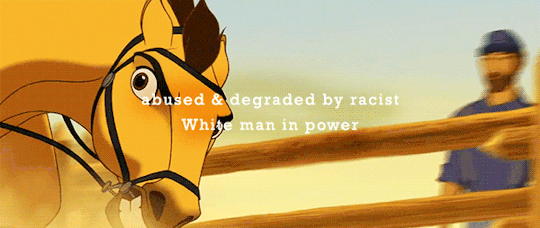

Spirit: Stallion of The Cimarron & the Indian Boarding Schools/Residential Schools allegory
69K notes
·
View notes
Photo


First screening of the film 40,000 Horsemen 75 years ago today
Boxing Day marks the 75th anniversary of the groundbreaking Australian feature film 40,000 Horsemen. Inspired by the exploits of the uncle of director Charles Chauvel, General Harry Chauvel, the film tells the story of the capture of Beersheba, Palestine by the Australian Light Horse in 1917. The film made its debut at the Mayfair Theatre, Castlereagh Street, Sydney in 1940 and quickly became a great moral booster with wartime Australian audiences. It also became the first Australian feature film to be signed for distribution in the United States. In England the film was claimed to have started the larrikin image of Australians. The film starred the legendary “Chips” Rafferty, Grant Taylor and debuted Betty Bryant, discovered by an MGM Scout at Bondi Beach. The desert scenes of Palestine and the Sinai were filmed on the sand dunes of Kurnell. In one battle scene over 2000 extras, many of them actual members of the First Light Horse, and hundreds of horses were used. The release was delayed by the censors, who objected to some scenes as being too violent, and the language of the Australians too crude; they also found one exotic dance scene a little bit naughty!
Images from: Charles E. and James A. Chauvel papers and pictorial material, 1915-1951. Link to images here.
Our Library is open to everyone. You can come in and use our express computers, read recent newspapers and magazines and get help from staff with finding information. When you sign up for one of our free Library cards you can also request books and other material from storage, use our eresources and book a study room. If you live in NSW, you can use most of our eresources from anywhere
25 notes
·
View notes
Text
all the best badass male fantasy heroes aren't cool bc they have a magic sword and an cool backstory btw. aragorn and geralt of rivia would be nothing if they weren't also, fundamentally, horse girls
29K notes
·
View notes
Text
Some film industry trivia from the article:
The Devil’s Horsemen are the leading film-industry horse supplier in Europe, owned by horsemasters Daniel and Camilla Naprous and their father, Gerard.
For the last 50 years, The Devil’s Horsemen have worked with some of the world’s best directors, production companies and producers such as Netflix and Disney to provide horses and carriages for blockbuster movies and award-winning TV series.
The Ebony members toured the yard, workshops and carriage stores, learned about the huge number of equestrian-related roles available in the film industry, and met some of the horses who have starred in productions such as Wonder Woman and Game of Thrones.
Including an unexpected Star Wars connection:
The youngsters then had an introduction to carriage driving from top-ranked driver Dan Naprous, who is preparing his team for the FEI Driving World Cup at the London International Horse Show this year. Dan, who played Darth Vader in Rogue One: A Star Wars Story, is the highest-ranked International carriage driver in Great Britain.
Movie horses, trick riding a buzz for inner-city equestrians
Movie horses, trick riding a buzz for inner-city equestrians
An Ebony Horse Club member tries out some trick riding moves with The Devil’s Horsemen during the London International Horse Show Riding Academy this week. © LIHS
Riders from London’s inner-city Ebony Horse Club had a once-in-a-lifetime experience with Hollywood stunt team The Devil’s Horsemen this week. (more…)
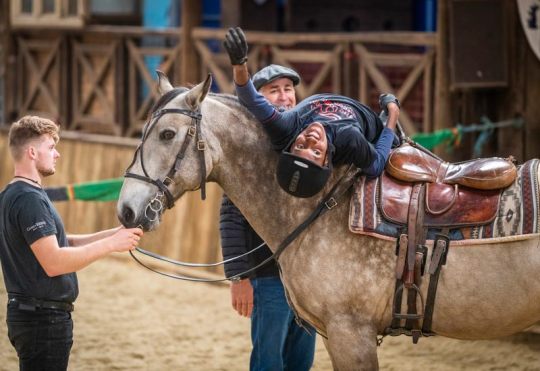
View On WordPress
54 notes
·
View notes
Photo

Buster Keaton, horse whisperer.
12K notes
·
View notes
Photo

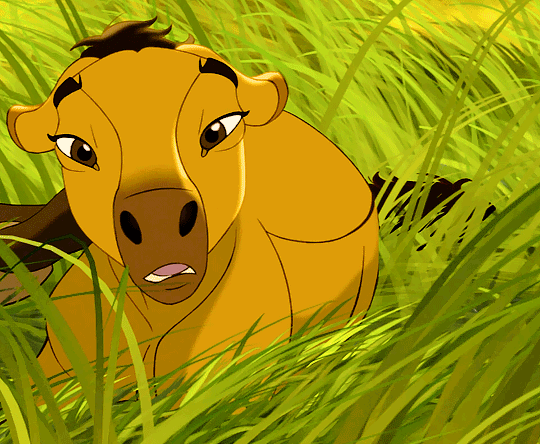
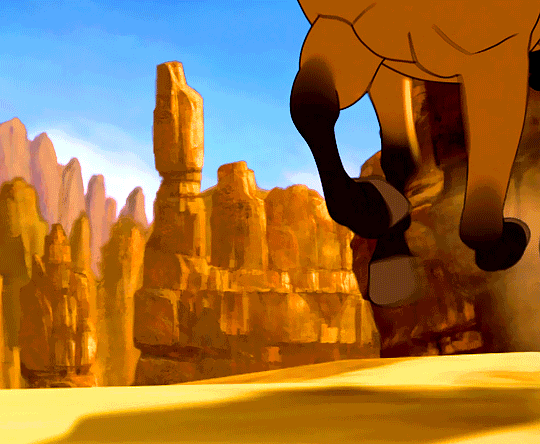
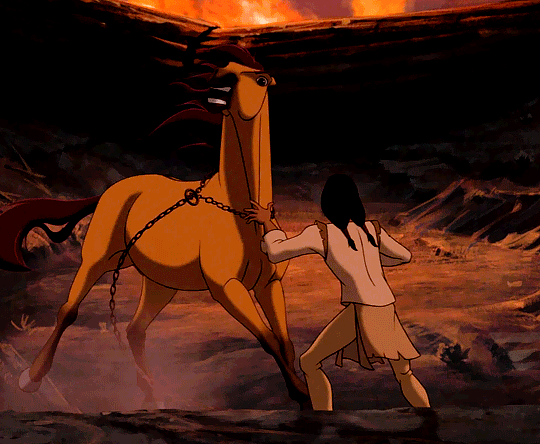



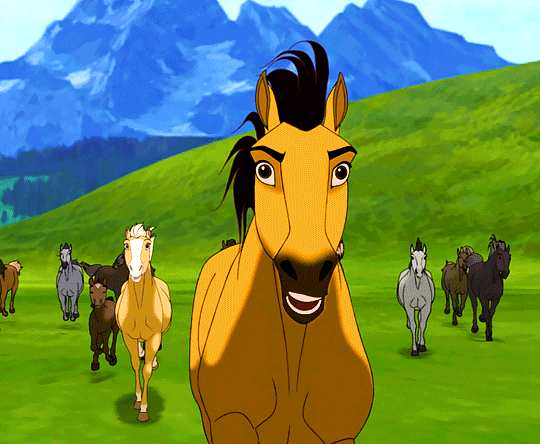
The land was ageless. It had no beginning and no end, no boundary between earth and sky. Like the wind and the buffalo grass, we belonged here. We would always belong here.
SPIRIT: STALLION OF THE CIMARRON (2002)
14K notes
·
View notes
Photo

Today’s Horse Is:
The famous Trigger, owned by Roy Rogers!
200 notes
·
View notes
Photo

Today’s Horse Is:
Champion! The World’s Wonder Horse owned by Gene Autry.
94 notes
·
View notes
Link
Casey Jones was found, then eight years old, a reputed man-killer, locked and chained in a dark stall at the Reform School in Golden, Colorado, less than ten miles from the Morrison family’s scenic Red Rocks Ranch. It is quite likely Chick had already heard of Casey Jones and knew exactly where to look to find a horse who could fill the role of a wild and beautiful outlaw stallion.Chick and Jack worked with the horse at the reform school for about a week, and then put on a demonstration for the wardens who were amazed to see Rex at liberty, racing back and forth, up and down main street in response to voice cues from the two trainers. Having confirmed the horse’s natural talent, he was purchased for $400 and given the stage name of Rex. Chick continued to work with Rex as his primary trainer and they were ready to start filming in about two weeks. Chick’s remarkable patience and training skills, along with his unique understanding of the horse’s exceptional intelligence and the violent responses he had learned to cope with continued abuse were instrumental in pointing Rex on a different path.

Title card for Rex, King of the Wild Horses, Pathépicture
Initially, Rex was brought to the Morrison ranch, and by the time filming started for Rex’s first movie, Chick had several broken bones and was on crutches, but he insisted he would never use a whip to correct Rex, and instead would use only kindness with the horse. The movie was filmed on location in the Red Rocks area, and even with the old black and white technology from the film released in 1924, it was spectacular. The film was directed by Fred Jackman, and the cameraman was George Stevens, who was just starting out and only 19 years old. Rex did his own stunts, including such feats as jumping across a yawning chasm, very similar to the famous leap Tom Mix had made with his horse Tony a year earlier. He also did such stunts as jumping off a vertical cliff and plunging into the river far below. These scenes are all the more remarkable in that Rex was willing to perform them alone with only the voice cues of his trainer for guidance.
Foaled May 1, 1915 and registered as bay with a small star, Rex was in fact very dark and appeared black and was always billed as a black stallion in his numerous movie appearances. Sellman, who often liked to name his horses after important people, named him after the American folk hero Casey Jones, a railroad engineer known for his speed, who died in 1900 when he collided with another train. He was immortalized by the folk song, “The Ballad of Casey Jones,” written by William Saunders.
Details of his early life are scarce but at some point, he began to be severely abused and had earned a reputation as a killer horse by the time movie producers discovered him. Some sources suggest he may have been abused by cowboys on the Sellman ranch trying to break him. If this were true, Sellman would have been very displeased as he was very particular about the training of his colts and personally oversaw the handling of all his young horses. Sellman Morgans were widely known and in demand as he advertised extensively and often sold his horses by the train carload. At any rate, Casey Jones was sold as a potential breeding stallion, when two years old, to a rancher in Colorado, and ran wild on the eastern Colorado plains for some time. He was believed to have suffered abuse from harsh practices employed when the horses were rounded up and was blamed for killing a wrangler during this process. The rancher ordered him shot. However, a boy’s reform school in Golden, Colorado, wanted him for breeding, so arrangements were made to send him there instead. Sadly, it seems abuse continued here as well. One day a boy took him out riding, and Rex returned alone. The boy was later found, apparently having been dragged to death. What exactly happened was never discovered. The boy may have fallen and caught his foot in the stirrup, causing Rex to panic. Once more, the horse was blamed and put into isolation, now having the reputation of a confirmed killer. He was said to have been kept chained in a locked stall for two years, which only added to the violent habits he developed as a result of chronic abuse.
When Chick Morrison and Jack Lindell discovered him in 1923, Rex’s temper had not improved with the severe confinement. Some of the boys at the school evidently amused themselves taunting the chained stallion by spitting at him. This was something Rex never forgot and the sound of someone spitting infuriated him. When Jack Lindell later discovered this idiosyncrasy, he put it to good use in scenes calling for Rex to appear as an angry and vicious wild stallion. He had only to stand just offstage and spit and Rex would immediately charge, teeth bared, ears flattened, and eyes blazing.
Rex had an uncanny intelligence and unconquerable wildness which viewers of his films instantly recognized, and which made him immensely popular. He was a magnificent animal, combining the ideal ancient Vermont Morgan type perfectly proportioned with his powerful 16 hand size, and natural grace and elegance which made him stand out from other horses. Typically cast as a wild or outlaw stallion, he seemed to understand and enjoy his role thoroughly, often striking a regal pose of his own accord and gazing far into the distance with what was often described as “the untamable stare of an eagle.”
55 notes
·
View notes
Photo

The Arabian stallion and equine actor JADAAN in Arabian regalia, posing at actor Rudolph Valentino’s memorial.
Rudolph Valentino was a movie star in the earlier half of the 20th century, and Jadaan was the 100% Davenport Arabian stallion that Valentino rode in his movies. If you would like to learn more about this Equine Actor, I and other bloggers posted about Jadaan earlier this year.
As an additional tidbit, I would like to extract from the above linked post the following quote:
“Valentino wanted Jadaan badly. Friends said he mentioned the horse often in the next few months, comparing the horse with famous statues he had seen in Italy, statuary of Garibaldi and Marco Polo, always mounted on rearing horses. “I used to look at the great, metal Garibaldi in the little park,” friends quoted the actor saying. “I can see him now, seated firmly on his rearing horse. I always wanted to ride like that.””
I’ve had the opportunity over the past month to examine the very first volume of the Italian government studbooks, and they have an extensive section on Arabian horses brought to Italy. The Arabians imported through the 1850s, 60s, and 70s numbered in the hundreds, with many many more bred on, and with these mares and stallions used in their regional stallion deposits to breed on in other breeds, namely for S. M. Vittorio Emanuele II’s work in the unification of Italy and then later through his desire to build a cavalry that could rival that of the Prussians and other European powers of the time. I can’t speak for Marco Polo, but it’s entirely possible that Garibaldi’s statue depicts him riding an Arabian horse, or an Arabian cross. It’s a matter of rumor that VEII himself rode one of his imported Arabian stallions to meet Garibaldi when the latter hit Italian shore.
Photo example of Garibaldi equestrian statue, below, from Getty Images:

52 notes
·
View notes